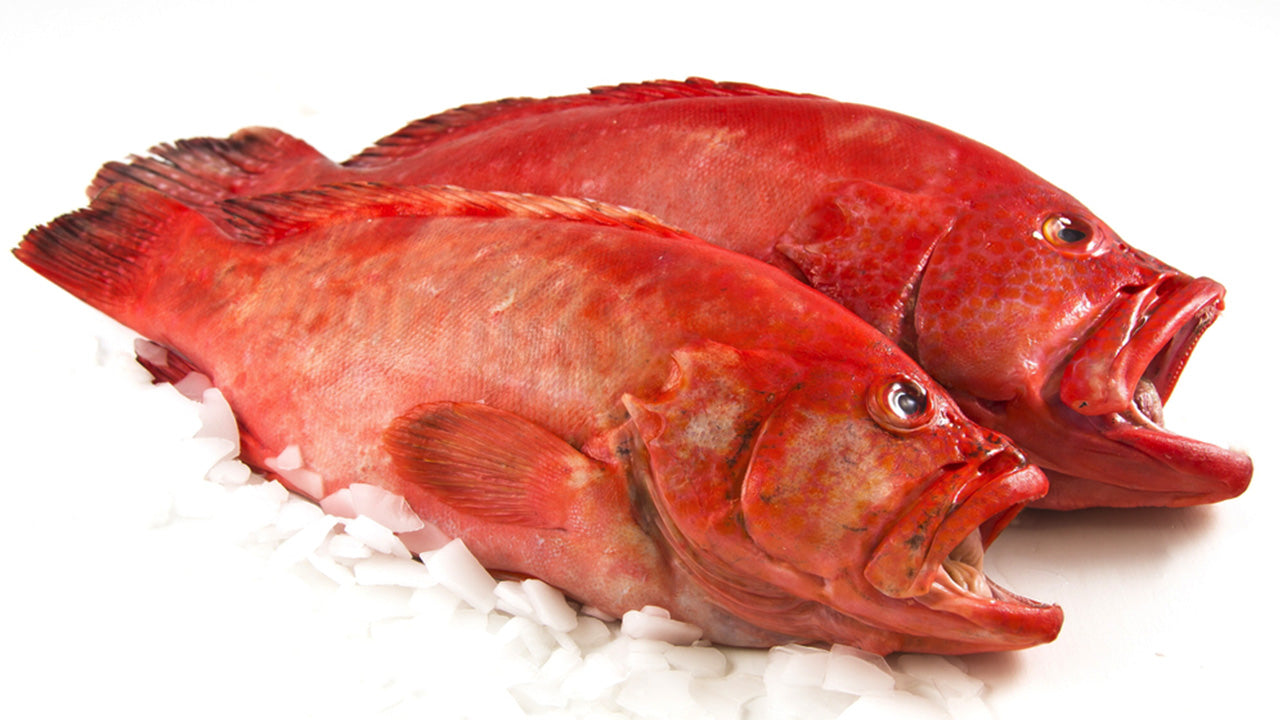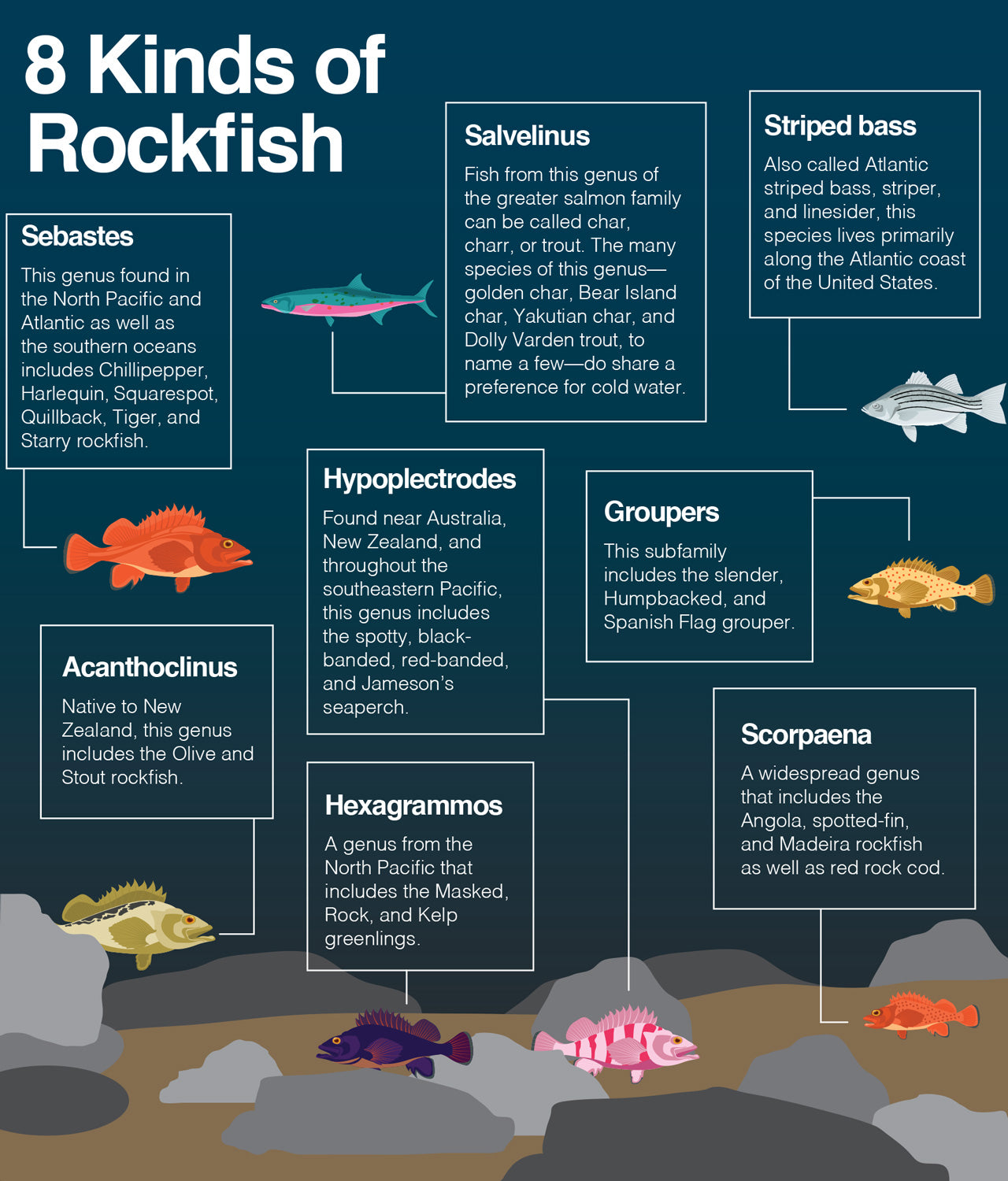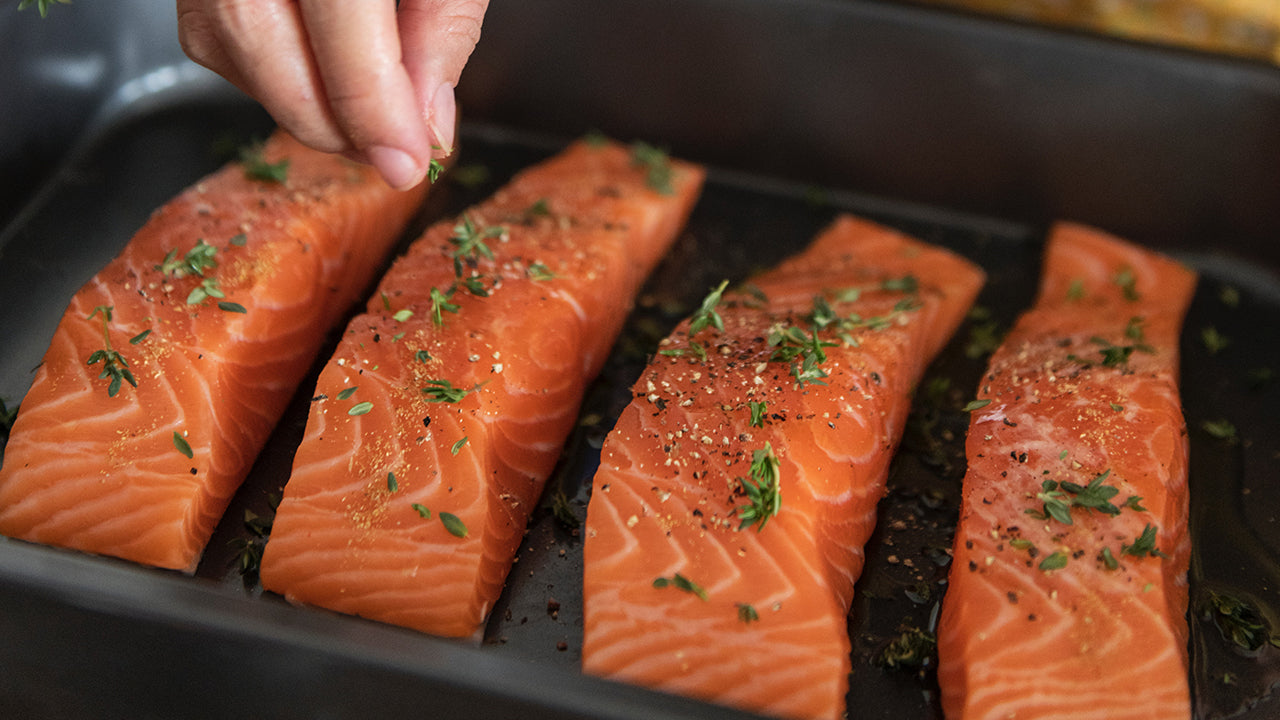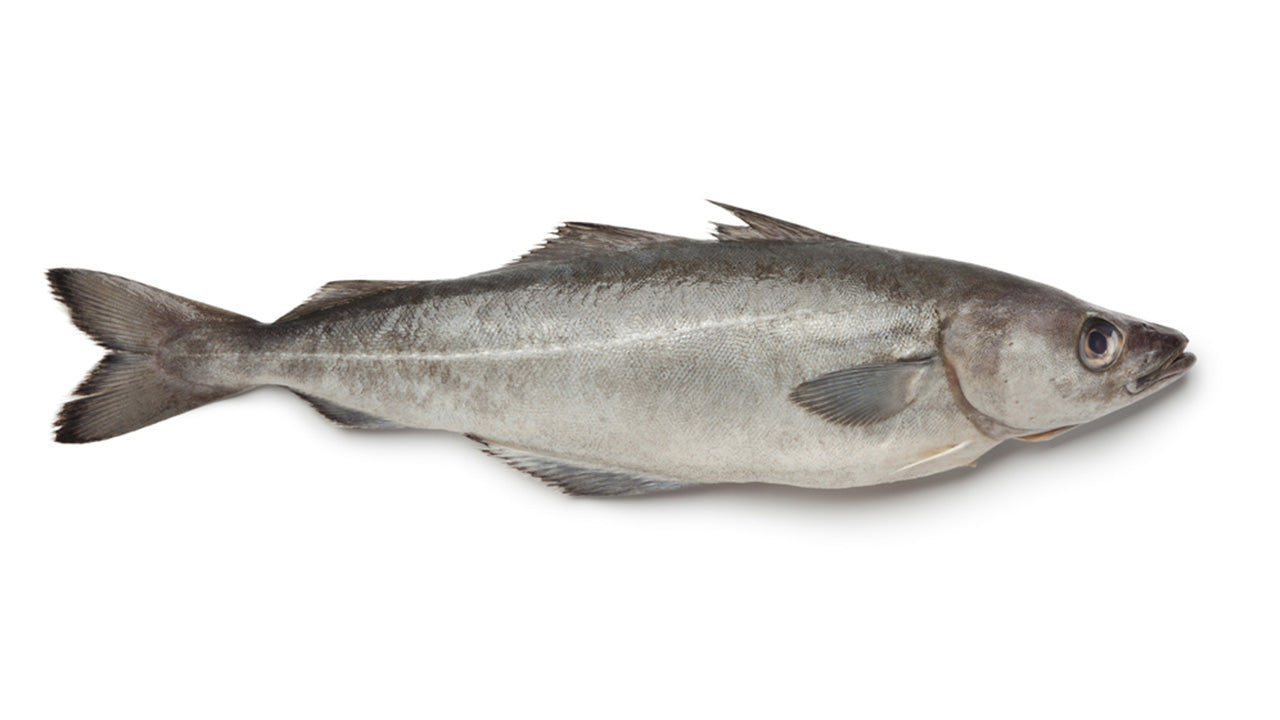Rockfish 101: Health Benefits, Potential Hazards and Preparation Tips
 By: by Amino Science
By: by Amino Science

The term “rockfish” can stir up quite a lot of confusion, in part because it refers to many different species of fish that all show the same inclination for lurking around rocks. These species are not closely related, however, and different varieties of rockfish—which look and taste nothing alike—can be found all around the globe. The rockfish designation can be applied to more than 100 fish species all told, in a whole spectrum of sizes, shape, and colors—from black to green to bright red and orange.

Given the diversity of fish referred to by that one name, it can challenging to determine whether or not rockfish has the kind of nutritional profile that would make you want to include it in your diet. The best option for analyzing the general nutrient value of rockfish is to look at data from a mix of fish species identified by that term.
It’s fair to say that rockfish is a good source of phosphorus, magnesium, and choline. And the USDA’s National Nutrient Database offers the following nutritional information for one fillet (approximately 149 grams) of cooked, dry-heat, mixed species rockfish:
- 162 calories
- 33.12 grams protein
- 2.41 grams of fat
- 355 milligrams of docosahexaenoic acid (DHA)
- 159 milligrams of eicosapentaenoic acid (EPA)
- 69.7 micrograms of selenium (100% of your recommended daily intake, or RDI)
- 6.9 micrograms of vitamin D (46% of your RDI)
- 340 milligrams of phosphorus (34% of your RDI)
- 1.8 micrograms of vitamin B12 (30% of your RDI)
- 5.8 milligrams of niacin (29% of your RDI)
- 775 milligrams of potassium (22% of your RDI)
- 0.4 milligrams of vitamin B6 (20% of your RDI)
- 1.3 milligrams of pantothenic acid (13% of your RDI)
- 50.7 milligrams of magnesium (13% of your RDI)
- 2.3 milligrams of vitamin E (12% of your RDI)
- 355 international units of vitamin A (7% of your RDI)
- 0.1 milligram of riboflavin (7% of your RDI)

Is Rockfish Good for You?
Again, since the definition of this group of fish is so broad, it can be tricky to conclusively determine whether rockfish is good for you. So, let’s talk about five reasons to be excited about eating rockfish, and two reasons to exercise caution.
1. Protein
A single fillet of rockfish contains slightly over 35 grams of protein. The amount of protein you need depends on your body weight and your activity level. To determine your Recommended Dietary Allowance, or RDA, you can multiply your weight in pounds by 0.36, or you can use this handy calculator.
Keep in mind that your RDA is the minimum amount of a nutrient—in this case, protein—that you need to not be deficient. Eating enough protein to meet your RDA could add up to as little as 10% of your daily caloric intake. Experts are now saying that for optimal health, you may want to eat up to twice your RDA of protein.
According to Nancy Rodrigues, a registered dietician and professor of nutritional science at the University of Connecticut in Storrs, who attended a “Protein Summit” with over 40 other nutrition scientists, a good goal would be to aim to get between 15% and 25% of your total calories from protein. This can be especially helpful when it comes to health goals like building and maintaining lean muscle and burning fat.
Kathy McManus, registered dietician and director of the Department of Nutrition at Brigham and Women’s Hospital believes that eating fish may be the best way to add protein to your diet and “improve the overall nutrient profile that would subsequently improve your health.”
Fish is a complete protein source, meaning it contains all nine essential amino acids: histidine, isoleucine, leucine, lysine, methionine, phenylalanine, threonine, tryptophan, and valine. Your body needs these amino acids to carry out vital functions like protein synthesis, tissue repair, and nutrient absorption. They also help to prevent muscle loss and to improve mood, sleep, and athletic performance.
To ensure you're getting enough of these essentials, you can also add supplemental amino acids to your wellness arsenal.
2. Selenium
A fillet of rockfish also contains 69.7 micrograms of selenium, an essential trace mineral—that’s almost 15 grams more than the RDI for an adult! And, in case you’re nervous, well below the safe upper limit of 400 micrograms.
Our bodies use selenium in several ways. Most notably, to maintain our immune systems, fertility, and cognitive function. We also need selenium for healthy thyroid hormone metabolism and DNA synthesis. Research indicates that selenium can help protect us from oxidative stress and infection, according to the Office for Dietary Supplements.
One outcome of ongoing oxidative stress can be the development of chronic diseases, including heart disease. Because selenium prevents the oxidative modification of fats in the body, it appears to protect against that. Some studies have yielded promising results, especially when it comes to cholesterol levels. Experts feel additional trials are needed, especially to determine how the impact of selenium from food might differ from the impact of selenium supplements.
Selenium antioxidant effects may also help lower your risk of developing Alzheimer’s disease. A study published in the Journal of Trace Elements in Medicine and Biology concluded that selenium deficiency can contribute to cognitive decline, and researchers from the College of Life Sciences at Shenzhen University in China found that selenium can help mitigate the impact of Alzheimer’s disease, at least in mice.
In 2003, the U.S. Food and Drug Administration (FDA) determined that there was scientific evidence indicating a link between selenium and a reduced risk of certain kinds of cancer. According to findings published in 2013, selenium appears to negatively affect cancer progression and halt tumor development. After reviewing multiple studies, the researchers found that selenium helped to stop the spread of breast, prostate, colorectal, fibrosarcoma, melanoma, liver, lung, oral squamous cell carcinoma, and brain glioma cancers. They concluded that not only can selenium help prevent cancer, but it can also help to treat it.
Ongoing research continues to identify new ways that selenium supports human health, and the 2015-2020 Dietary Guidelines for Americans recommend getting nutrients like selenium from food sources such as rockfish.
3. Vitamin D
Rockfish is one of very few natural food sources of vitamin D. A fillet of rockfish weighing around 149 grams also gives you 6.9 micrograms of vitamin D, nearly half your RDI. Vitamin D is absolutely crucial for human health, especially building and maintaining bones, since it helps our bodies absorb calcium.
There’s also some evidence to suggest that vitamin D, which plays a crucial role in regulating cell growth and communication between cells, can slow the progression of cancer.
Recommendations on how much vitamin D we need vary from organization to organization, and there’s compelling evidence to suggest we err on the side of more than enough. The minimum daily intake recommendations for adults range from 600 IU to 5,000 IU and the maximums from 4,000 IU to 10,000 IU.
4. Potassium
According to the Department of Health and Human Services, rockfish is one of the best dietary sources of potassium. A single fillet provides about 696 milligrams, and healthy adults should shoot for at least 4,700 milligrams daily.
One of the primary reasons we need potassium is to regulate our fluid balance and the electrical activity of our muscles, including our heart.
Potassium also has a number of health benefits, including lowering your risk of stroke. Researchers tracked 90,000 women for 11 years, and found that those who got the most potassium in their diets were 16% less likely to have a stroke compared to those who consumed the least.
Potassium helps treat hypertension (high blood pressure), one of the most common diseases in the United States and one of the hardest to control. A review of existing data published in the American Journal of Physiology-Renal Physiology described the effect potassium has on high blood pressure and cardiovascular disease as “remarkable.” One study mentioned in the review found that cardiovascular disease mortality in elderly veterans decreased by 41% when they received more potassium in their diet.
Potassium can also help prevent kidney stones, and according to data from the Third National Health and Nutrition Examination Survey, potassium can even decrease your overall risk of untimely death by 20%.
5. Omega-3 Fatty Acids
Rockfish also contains a significant share of long-chain omega-3 fatty acids, specifically, docosahexaenoic acid (DHA) and eicosapentaenoic acid (EPA). A single fillet contains 355 milligrams of DHA and 159 milligrams of EPA.
Omega-3s help form the membranes that surround every cell in the body. We also need them to carry out numerous functions in our hearts, blood vessels, lungs, immune system, and endocrine system.
Increasing your intake of EPA and DHA has been shown to lower triglycerides, and ongoing clinical trials are examining whether it can lower your risk of certain cancers as well as treat a variety of other conditions.
Plus, Two Points of Caution
As is true for all seafood, eating rockfish does put you at some risk of mercury exposure. In fact, eating contaminated fish is the top cause of mercury exposure in the United States. When plants and factories emit toxic smog containing mercury, that pollution can travel great distances and enter bodies of water. It’s then taken in by small organisms and works its way up the food chain, concentrations rising as each predator in turn becomes prey.
Mercury exposure is a serious and pervasive health problem. Even small amounts can have serious consequences for brain development, so children under the age of six and pregnant women should exercise even more caution.
There’s no way to use sight, smell, or taste to determine whether a fish is contaminated with mercury. Cooking does nothing to mitigate contamination, and neither does trimming away the skin and fat.
Nearly all fish contain at least a trace amount of mercury, and it’s certainly possible to access the many health benefits associated with eating fish without ingesting dangerous amounts of mercury.
The Environmental Defense Fund offers a helpful Seafood Selector that gives an overview of how much mercury different species of fish are likely to be contaminated with, as well as the ecological impact of eating those fish.
Rockfish fall in the mid to low contamination ranges, depending on the variety, and most receive a best choice eco rating.
If you live on the East Coast of the United States and you want to catch and cook your own rockfish, there may be another reason to exercise caution. In 2016, the D.C. Department of Energy & Environment released an advisory about potentially harmful levels of polychlorinated biphenyl (PCB) in rockfish. This industrial toxin, now phased out but previously used to manufacture electrical equipment, motor oil, and more, can cause widespread problems in humans and other animals.
While the advisory was specific to D.C., rockfish migrate, meaning it’s likely that those caught from Maryland to Maine may also be contaminated.
All commercially sold fish, however, are tested for PCB contamination, so it’s only a possible risk for recreational fishers. Toxins like PCB tend to concentrate in the skin and belly, so unlike with mercury, trimming away those parts does reduce your risk. Grilling or broiling rockfish also reduces contaminants as the fat drips off.

The Great Rockfish Menu Debacle
While ordering rockfish in a restaurant or buying it from a fish market does reduce your risk of exposure to toxins, it can also mean rolling the dice when it comes to exactly what kind of fish you’re getting. On the East Coast of the United States, rockfish typically means striped bass. On the West Coast, however, it’s much more likely to refer to a chilipepper or boccaccio.
And that’s assuming the rockfish you get is even called rockfish at all! Sheila Bowman, of the Monterey Bay Aquarium’s Seafood Watch Program, told NPR she’s seen multiple varieties of rockfish being sold at seafood markets in downtown Monterey as “snapper” and “rock cod.”
As consumers become more invested in knowing exactly what they’re eating and where it came from, the seafood industry may have to start using more precise wording to sell fish. Bowman believes identifying fish specifically and accurately on menus and in markets will help increase accountability in an industry that can generalize to the point of total obfuscation.
John Rorapaugh, who owns a seafood wholesaler and distributor in Washington, D.C., thinks using more accurate fish names on menus could actually be a selling point. "I think it's more interesting to use the real names," Rorapaugh told NPR. "If you have thornyhead rockfish on the menu, it will start a conversation.”
How to Cook Rockfish
Rockfish taste tends to be mild, so it’s important to treat this fish delicately. This succulent fish is not the one you want for heavily seasoned recipes or ones involving many different preparation techniques. The best rockfish recipe is a simple one. A Bay Weekly article offers excellent advice on how to cook rockfish to produce the best results:
- Blot the fish dry, coat lightly with oil, and season with salt, pepper, fresh dill, and paprika. Broil in a shallow pan until browned on top and flaking firmly. This should take about 10-15 minutes.
- For serving, make your own tartar sauce (far better than the ready made stuff, and simple to prepare), or a quick Hollandaise.
- If you just have to fry your rockfish, mix an egg, a tablespoon of water, and just enough beer or soda to create a medium-thick slurry. Coat the fish thoroughly, and then cover with a generous amount of Panko bread crumbs. Refrigerate for an hour or more, then heat oil in a heavy skillet to around 400 degrees. Ease the fish in and flip when the first side turns golden. Remove when crispy on both sides.
- This fried fish tastes delicious with homemade tartar sauce, too, or with your favorite hot sauce.
- For side dishes, stick to keeping it simple. Asparagus, fresh tomatoes, or steamed new potatoes all pair beautifully with rockfish.
- And for beverages, go for a Pinot Grigio or a Pale Ale.
You could also draw inspiration from the The Rockfish Grill, in Anacortes, Washington, where they rockfish florentine, featuring pan-seared wild rockfish topped with a spinach, artichoke, green chili and cheese sauce, finished in a wood fire oven and served with roasted red potatoes and seasonal vegetables.


Up to 25% off Amino
Shop NowTAGS: food
Join the Community
Comments (0)
Most Craveable Recipes




 833-264-6620
833-264-6620



















